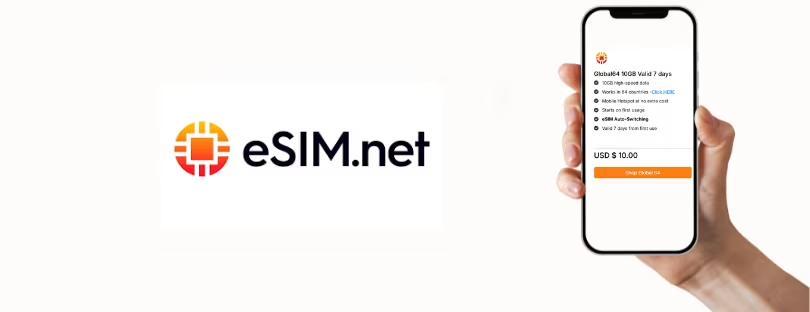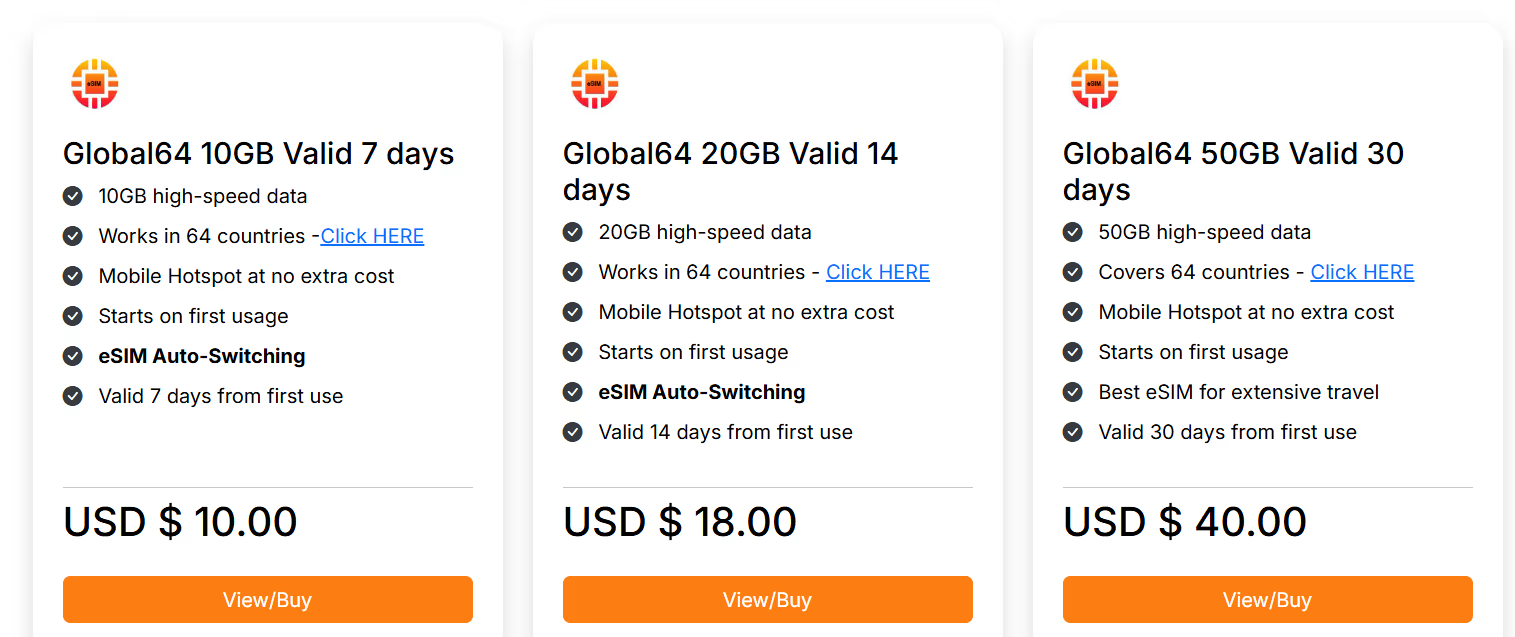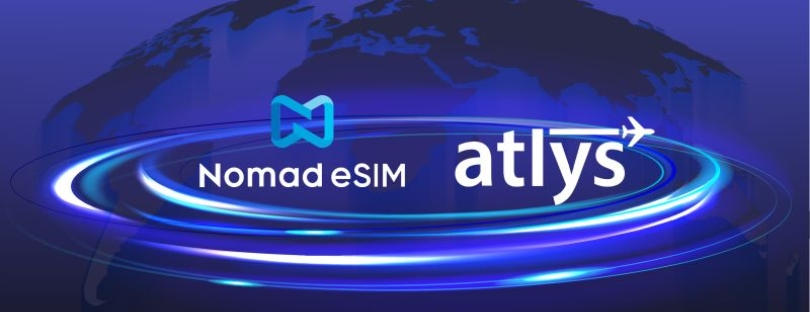
Global64 lands at WTM London: a travel eSIM built for Apple’s new auto-switching era
Coinciding with this week’s World Travel Market (WTM) in London, eSIM.net has unveiled Global64, a new travel eSIM that integrates directly with Apple’s iOS 26 automatic travel SIM switching feature. eSIM.net Global64 esim
It’s being billed as the first eSIM globally to work with Apple’s latest automation for travelers—and if it performs as promised, it could mark a genuine shift in how we stay connected abroad.
The big idea: travel eSIMs that switch themselves
Until now, even the most tech-savvy travelers have had to juggle eSIMs manually—disabling their home line, turning on their travel eSIM, and then reversing it all on the return flight. With iOS 26, that friction fades away.
Apple’s new feature allows iPhones to detect international travel and automatically activate a preloaded travel eSIM, then reactivate the user’s domestic SIM once they’re back home. In other words, you land, your phone connects, and you’re online—no SIM swaps, no settings menus, no stress.
That’s precisely the behavior Global64 is built around. By leveraging iOS 26’s automation engine, it promises “set-and-forget” connectivity for users who frequently cross borders.
“Your phone just works,” says eSIM.net CEO
“Global64 marks a major milestone for mobile connectivity,” said Gerry O’Prey, CEO of eSIM.net. “For the first time, travelers can land in another country and their phone simply works — no SIM swaps, no settings, no stress. This is how travel connectivity was always meant to be.”
It’s a bold claim, but it’s grounded in something Apple has actually implemented — not just marketing hype. The automation is built into iOS 26, and eSIM.net is the first provider to design a product specifically around it.
What Global64 actually offers
Global64 is a data-only eSIM that works across 64 countries, including the USA, UK, EU, Australia, Canada, Japan, and more. It’s designed for both frequent travelers and casual holidaymakers who don’t want to think about roaming plans or juggling local SIMs.
When you cross a border, your iPhone running iOS 26 automatically switches to Global64 for data. When you return home, your domestic line is automatically reactivated. The eSIM comes preloaded with flexible data bundles that can be used across all supported countries — no roaming fees, no local setup required.
Coverage includes most major travel destinations and allows hotspot tethering. Plans range from 10GB to 80GB, with validity periods from 7 to 60 days, depending on how much data you need.
If you want to buy this eSIM, claim your 7.50% discount; simply use the coupon code CM4496-AF at checkout.
Timing the launch with WTM London
eSIM.net’s timing is deliberate. WTM London is the world’s largest travel trade exhibition, drawing thousands of industry players — airlines, hotel chains, tour operators, and tech innovators — to discuss the future of travel. Announcing Global64 here makes a statement: connectivity is now central to the travel experience.
“The world’s biggest travel event is the perfect backdrop for this milestone,” said O’Prey. “Travel technology is evolving fast — and connectivity is at the heart of that transformation.”
The launch signals how far eSIMs have come. What began as a niche solution for digital nomads is now a mainstream expectation, supported directly by Apple’s operating system.
The real-world experience
In practice, the setup is simple:
- Purchase and install Global64 before your trip.
- When you land, iOS 26 detects your new location and prompts: “Turn On Travel eSIM.”
- Tap once, and your phone connects using the Global64 data line.
- When you fly home, iOS automatically reactivates your primary SIM.
No more toggling settings in airports or switching between profiles mid-flight. It’s Apple’s automation doing the work — with eSIM.net providing the global data to back it up.
That said, Apple still includes a user confirmation step on arrival (to prevent unwanted network use). So while “automatic” isn’t fully hands-free yet, it’s as close as iPhone users have ever been.
Who it’s for—and who it’s not
Best for:
- iPhone users running iOS 26 or newer who want the most effortless travel connectivity possible.
- Frequent travelers or cross-border commuters (Europe, North America, Asia-Pacific).
- Digital nomads or business travelers who value reliability over micromanagement.
Not ideal for:
- Android users, since Google hasn’t yet matched Apple’s automation feature. (You can still use Global64 manually, but without the automatic switching.)
- Ultra-budget travelers who prefer to buy a local eSIM in each destination for the lowest rates.
- Users who need calling or SMS services—Global64 is focused on data-only connectivity.
What could be improved
Even for a strong launch, there’s room for refinement:
- More transparency about local networks. eSIM.net lists countries but doesn’t yet specify which local carriers provide coverage. Competitors like Ubigi and Airalo often share at least the primary local partner, which helps users anticipate performance.
- Guided onboarding for new users. Since iOS 26’s automation can vary slightly by country, a short in-app walkthrough (“what happens when you land”) would simplify setup and reduce confusion.
- Android optimization. A comparable automation guide for Android users could ensure the experience isn’t purely Apple-centric.
These tweaks would help make Global64 more inclusive — and reduce customer support queries from less tech-savvy travelers.
Alternatives worth considering
Airalo – The most widely known globaI eSIM marketplace. Offers flexible country and regional plans, smooth onboarding, and strong customer support. While it doesn’t yet integrate iOS 26 automation, it’s the go-to for travelers wanting choice and a polished app experience.
Nomad eSIM – Popular for its affordable global plans and reliable service. Ideal for travelers who don’t mind manual switching and want competitive pricing.
Ubigi—backed by Transatel/NTT, known for reliable coverage and transparency about local networks. Its manual control approach appeals to users who prefer knowing exactly when their data line switches.
Each offers its own balance of price, app design, and coverage depth. But Global64’s iOS 26 integration is a first-mover advantage that others will likely copy soon.
The bigger picture: what this means for travel tech
This isn’t just a product launch — it’s part of a broader shift toward smart travel connectivity. The rollout of iOS 26 makes eSIM adoption simpler, and that’s critical: most travelers still don’t know how to activate an eSIM or fear losing data access abroad. Apple’s automation lowers that barrier dramatically.
We’re entering a post-roaming era where travel connectivity becomes invisible — powered by eSIMs that install instantly, auto-activate when you land, and shut off when you return. The implications go beyond tourists: airlines, hotels, and travel agencies can now bundle “connectivity included” into their packages with far less complexity.
What the competitors should learn
The travel eSIM market is crowded — but differentiation is now about user experience, not just price. Global64’s launch shows that UX and automation will define the next wave of adoption. In 2026, expect other players to push updates like:
- “Apple-verified auto-switch ready” labels
- Real-time activation status inside eSIM apps
- Bundled travel insurance or lounge access tied to eSIM plans
It’s the same evolution we saw in fintech—convenience first, then loyalty.
Final thoughts
Global64 isn’t the first global eSIM — but it’s the first to feel truly Apple-native. By syncing perfectly with iOS 26’s new automation, it bridges the last usability gap for travel connectivity. For iPhone users, that’s a big deal: install once, travel anywhere, and your phone just works.
Still, it’s not for everyone. Android travelers and voice-call users won’t get the same seamless magic yet. And while coverage is broad, eSIM.net should be more transparent about network partners and speeds to compete head-to-head with Airalo or Ubigi.
But conceptually and technically, Global64 nails the direction this industry is heading. It transforms eSIMs from “something you set up” into something your phone just handles — quietly, automatically, intelligently.
For travelers, that’s the dream.
For competitors, it’s the new standard.













